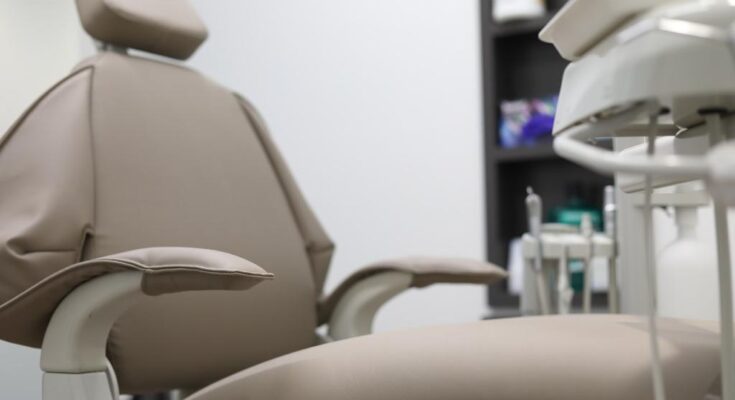Efficiency plays a pivotal role in the effective functioning of healthcare clinics, serving not only to elevate the caliber of patient care but also to optimize the allocation of resources. In today’s dynamic healthcare landscape, clinics are compelled to devise strategies that streamline their operations and extract the utmost value from their available resources. This article presents six invaluable recommendations poised to significantly enhance the operational efficiency of health clinics, ultimately conferring benefits upon both patients and healthcare providers.
Enhancing Administrative Efficiency
To enhance operational efficiency, healthcare facilities should consider adopting electronic health record (EHR) systems, facilitating effortless retrieval of patient data and diminishing the reliance on paperwork.
The automation of appointment scheduling and reminder systems holds the potential to mitigate patient no-shows and optimize the allocation of resources. Furthermore, the consolidation of patient information within the clinic’s database guarantees swift access for staff to vital data, consequently promoting more streamlined decision-making processes and enhancing the quality of patient care.
Optimizing Staffing and Workflow
Optimizing staffing represents an integral facet of clinic management. Consistently evaluating and adapting staff schedules following patient demand serves to mitigate overstaffing during periods of low patient volume and understaffing during peak activity.
Enforcing effective task delegation and elucidating role responsibilities among the staff guarantees that each team member operates within the confines of their professional scope, fostering optimal efficiency.
Additionally, the seamless orchestration of patient flow, spanning from the initial registration to the final discharge, holds the potential to curtail wait times and elevate the overall quality of the patient experience.
Investment in Technology and Equipment
Contemporary healthcare places significant reliance on advanced technology and specialized equipment to deliver precise diagnoses and effective treatments. Healthcare clinics must make strategic investments in state-of-the-art diagnostic and treatment apparatus to enhance the swiftness and precision of patient care.
The integration of telemedicine and virtual consultations not only broadens the clinic’s service accessibility, facilitating care for remote patients but also underscores the critical importance of maintaining a robust and resilient information technology infrastructure. Such infrastructure is indispensable to guarantee the seamless functionality of clinic management software and the secure handling of electronic health records.
Health clinics should invest in the latest diagnostic and treatment equipment, and payer-provider analytics data software can assist in tracking the financial aspects of these investments.
Prioritizing Patient Engagement and Education
Effective patient engagement hinges on robust communication channels. Health clinics can bolster patient engagement by establishing clear and responsive communication pathways. Encouraging patients to take charge of their health through education and support not only fosters better health outcomes but also promotes the efficient use of clinic resources.
This proactive approach facilitates a collaborative patient-clinician partnership, enhancing overall healthcare quality and promoting a sense of shared responsibility in achieving optimal health. Such engagement not only benefits individual patients but also contributes to the broader efficiency and effectiveness of healthcare delivery within the clinic.
A Commitment to Continuous Quality Improvement
Efficiency should be an unwavering focal point within healthcare clinics. The establishment of regular performance assessments and quality improvement initiatives proves invaluable in pinpointing areas warranting further optimization.
Soliciting feedback from both patients and staff serves as a data-driven compass guiding clinic enhancements. The incorporation of evidence-based practice guidelines ensures that the clinic remains at the vanguard of medical advances, delivering superlative care with maximum efficiency.
Effective Inventory and Supply Management
Prudent inventory and supply management represent indispensable tools in minimizing waste and guaranteeing the availability of critical items. Diligent monitoring and optimization of medication and supply stocks mitigate the risks of shortages or excess inventory.
The integration of inventory tracking systems affords real-time insights into item utilization, expediting reorder processes. Negotiating favorable supplier agreements can result in cost savings and heightened efficiency across the supply chain.
Conclusion
Enhancing the efficiency of a health clinic is a multifaceted undertaking, encompassing various facets of clinic operations. The six recommendations expounded here offer a comprehensive blueprint for efficiency enhancement, spanning administrative processes, technological integration, patient engagement, quality augmentation, and supply management. By embracing these strategies, healthcare professionals can ensure that their clinic operates at its zenith, furnishing high-caliber care while making judicious use of available resources. In so doing, they contribute to the well-being of both patients and staff, ultimately augmenting the clinic’s reputation and ensuring its enduring prosperity.



